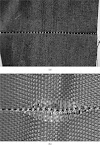CHEMICAL PROCESSING ON COTTON FABRIC
Prajwal Patil & Chaitayna Patil |
Chemical Engineering, Tkeit Warnanagar | July 22, 2021
sangramsourabh1474@gmail.com
INTRODUCTION:
From the ancient time, there are three basic needs of human being that are Food, Clothes and Shelter. From these three, cloths are important as well as necessity of folks. In making of clothes there are many chemical and mechanical process.
Chemical processing on cotton is gaining importance in the recent years due to the integration of ecology, fashion and public’s rising interest social issues. The chemical processing is required to conquer the viewer’s acceptance. The chemicals give cotton fabric the required strength, lustre, appearance and many more things.
CHEMICAL PROCESSING:
Here are the most important chemical processes done on the cotton fabric:
1. Singing – It is process of burning of protruding fibres from the surface. This fibres are also called loose fibres. This process allows fabric to clearly seen from distinct, it also improves the reflection of surface as well as improve lustre and softness of fabric. There are two types of singing:
1. Rotary cylinder singing
2. Gas in singing
2. Sizing – In this process size paste is applied to warp yarn for gaining strength during weaving. Ultimately it prevent abrasion action between the yarns.
• Natural sizing - This process requires starch and their derivatives also cellulosic derivatives such as carboxy Methylcellulose as ingredients .
• Synthetic sizing – In this process polyester, modified polyester, PVA are main agents. They are applied on the fabric through the solution.
3. Desizing – This process is used to removal of excessive size paste from the yarn and fabric and this is mostly done with water treatment. Desizing is done with three process:
1. Rot steeping – In this process 40-60°C temperature is required to desize. It is time consuming process.
2. Oxidation steeping – In this process sodium hypochlorite and H2O2 these oxidising agent are used, this is better process as compared to the Rot steeping.
3. Acid Steeping – Slury is made with sulphuric acid (0.5-1%) at 40°C used with water and then it is used to desize.
4. Scouring – This process removes all undesirable impurities like dirt & dust, vegetable matter from the fabric. In the scouring the solution of NaOH of 2-3% and sodium silicate (1%), soap (1%) as detergent wetting agent is used. Objective of this process is to make fabric hydrophilic also increase absorbency and mostly removes non cellulosic substances from the fabric
Types- 1. Discontinuous method
2. Continuous method
5. Bleaching – This process used for whitening of fabric. In this process (2-8%) NaOH or Na₂CO3 (0.8-0.6%) agents are used to prepare the solution from which fabric is passed. This process helps in whiting of fabric by destroying the coloured matter.
6. Mercerization – It is only applicable for cellulosic fibres especially cotton. Mercerization helps to alter the chemical & physically properties of the fabric. The agent used is NaOH (18-85.%) in the solution and total time fabric is dipped in solution is 1min. Objectives of this process is to improve lustre, absorb dies and improve strength.
7. Dyeing – The dyeing of cotton fabric is done to impart colour to the fibres of the yarn, also to increase the cost of the fabric . Mostly reactive dyes are used to dye the cotton fabric. Reactive dye consist of (0.5) salt and soda ash 5 g/l . This is a crucial step in chemical processing.
8. Finishing – This process insures the fabric is now usable. In this process no chemicals are used. Only fabric is inspected and freed from defects.
CONCLUSION:
The chemical processing is the main way to increase the lustre and brightness of the fabric, there are eight steps of processing and they are efficient as well as productive steps. The dyeing is important process, which increase the price of the fabric and all other process improve strength and clean the surface from unrequired materials. The chemical processing of fabric is best way to improve the appearance of the fabric.
REFERENCES:
1. https://www.slideshare.net/Amitsirohi2/all-steps-of-preparation-of-fabric-for-dyeing
2. https://www.slideshare.net/nileshkucha/chemical-factors
3. https://www.slideshare.net/kanhaiyakumawat2/textile-chemical-proce
4. https://images.app.goo.gl/jotEX1KxE46bAHcx7

















0 Comments
If you have any doubts, please don't hesitate to ask